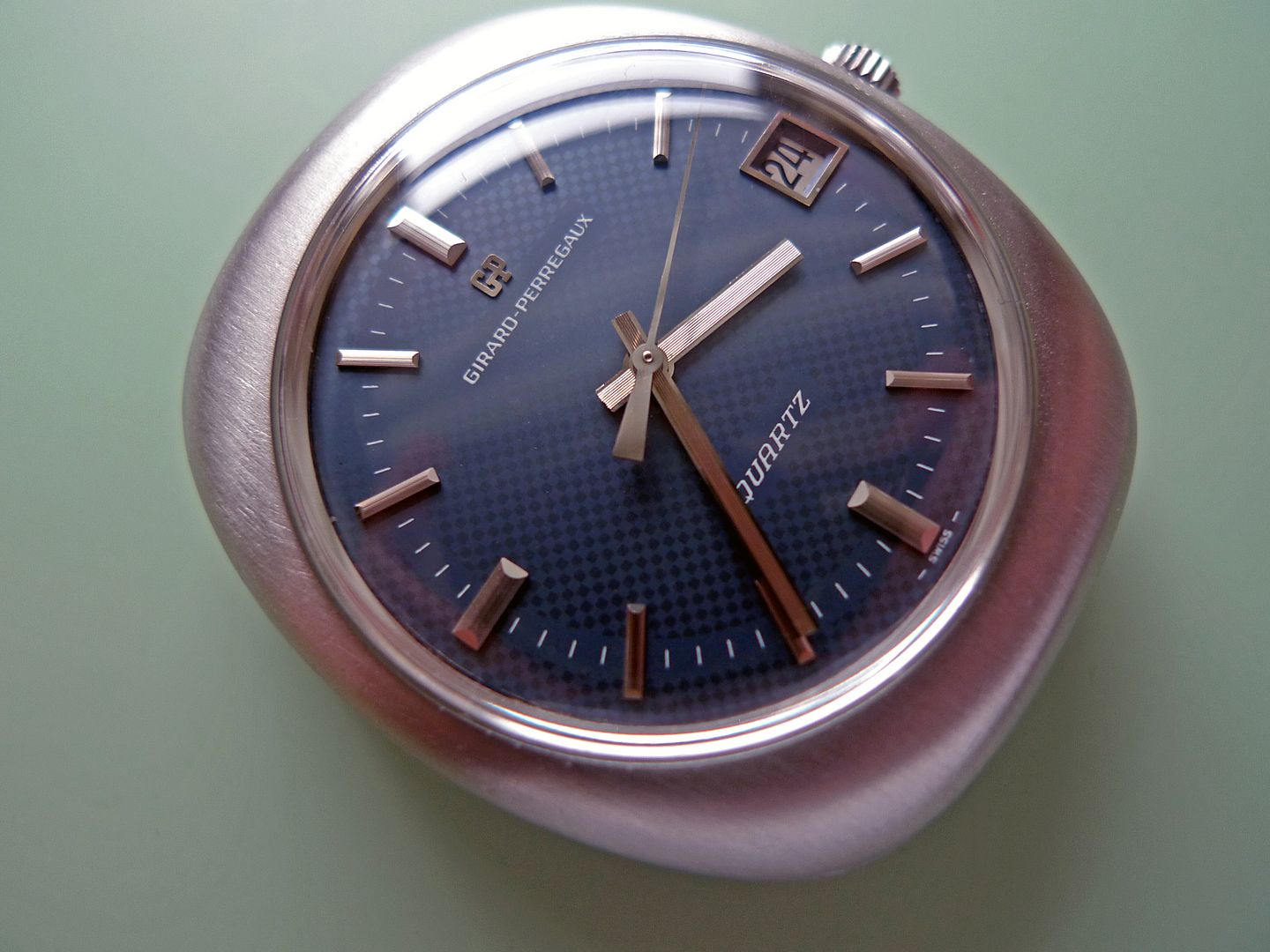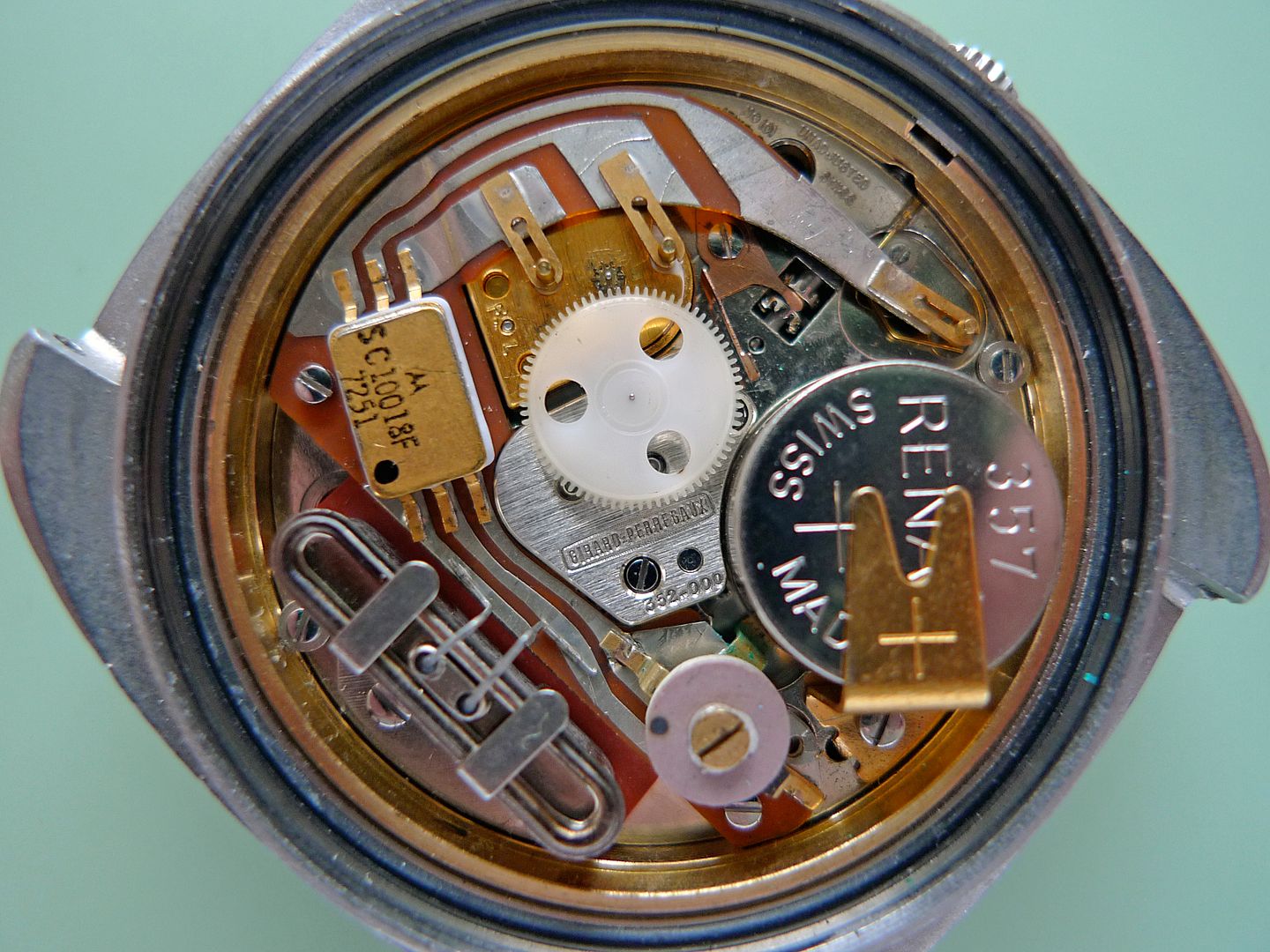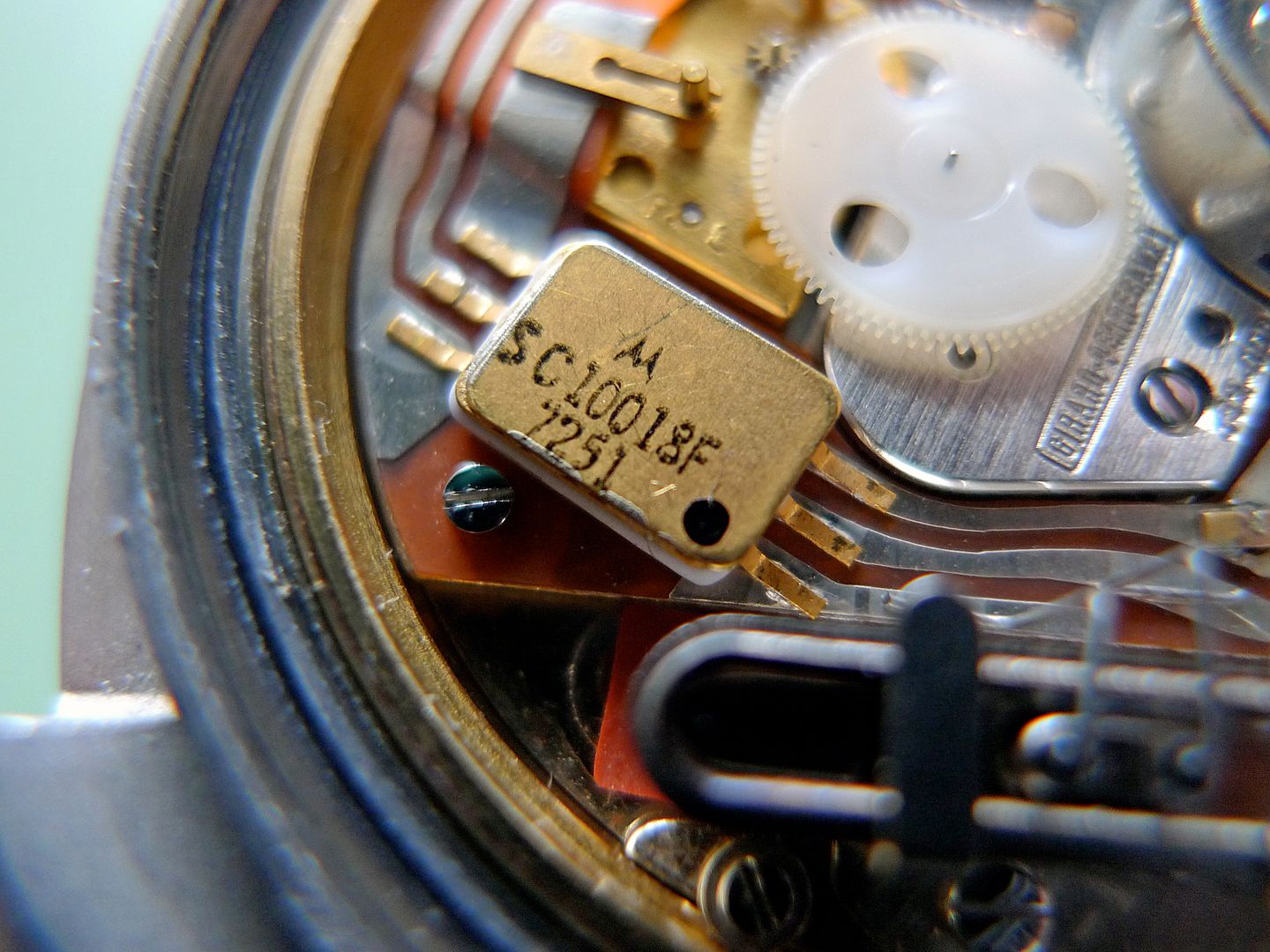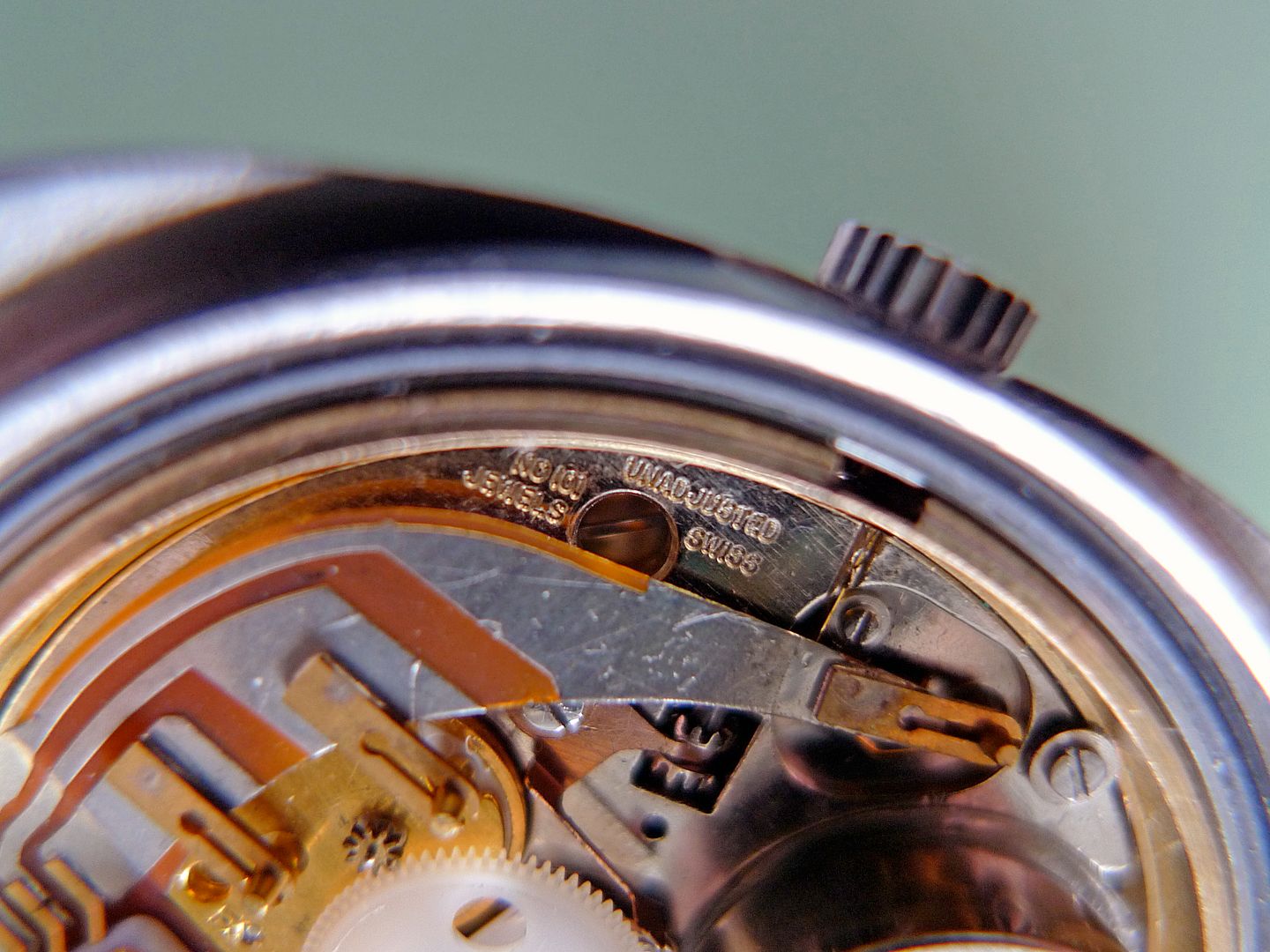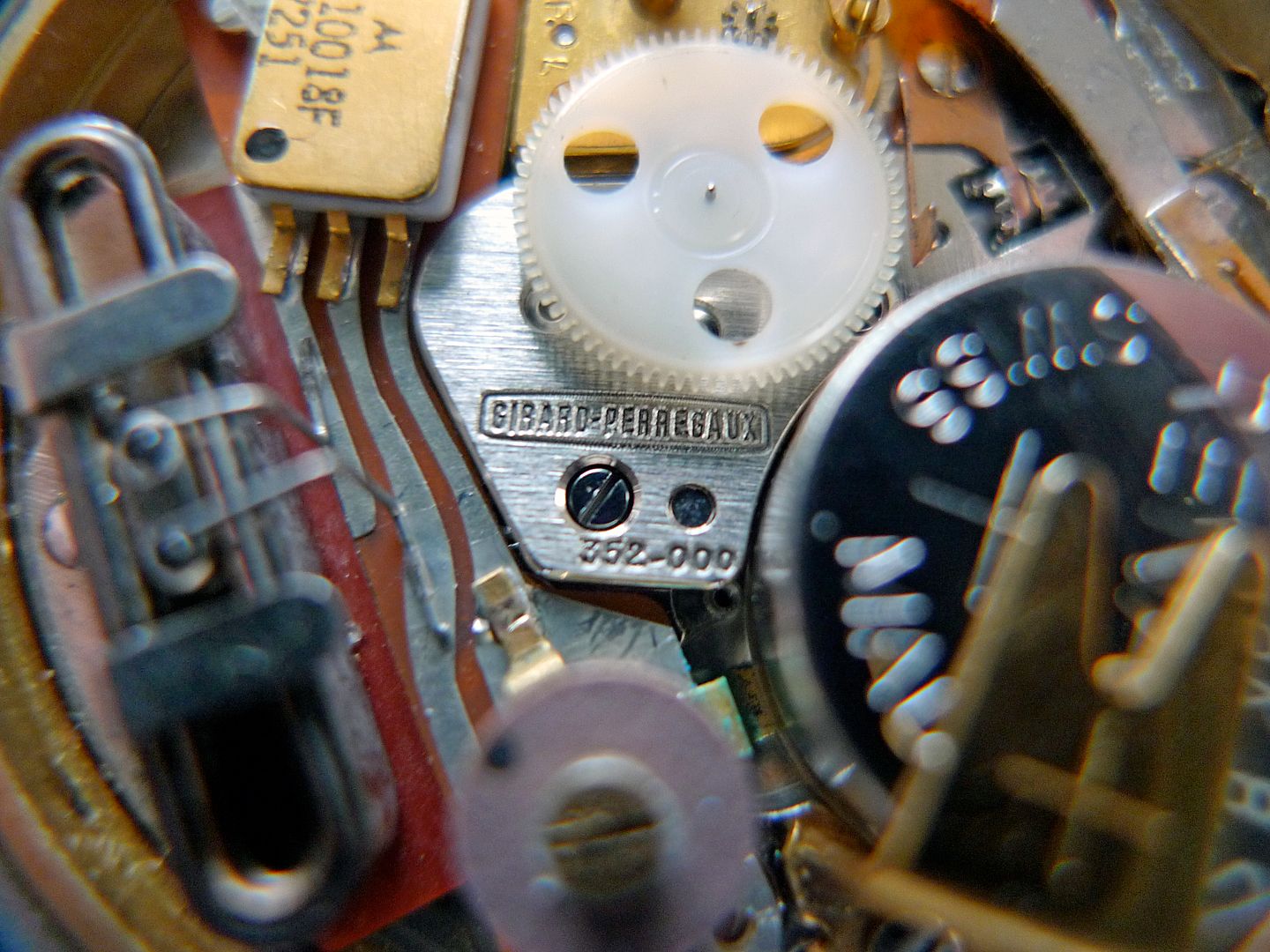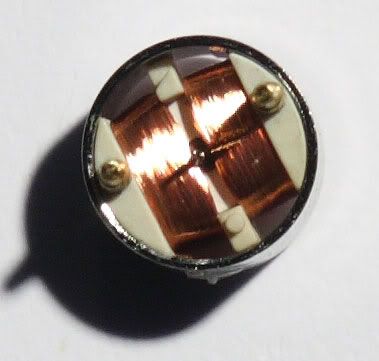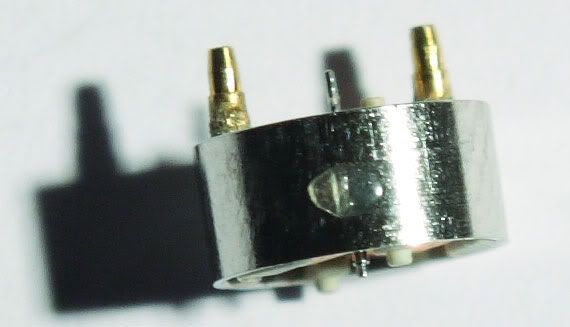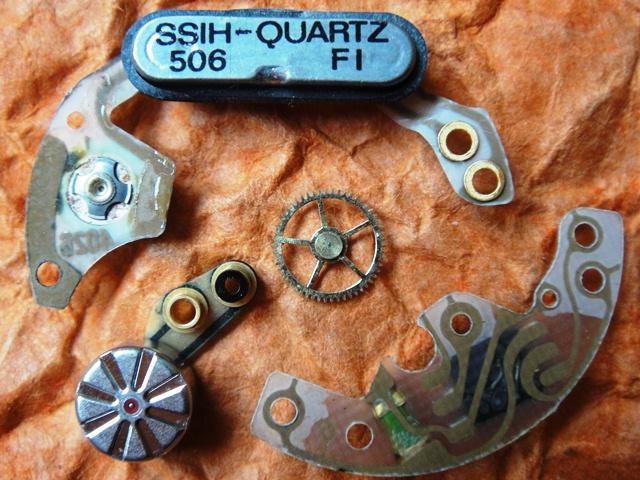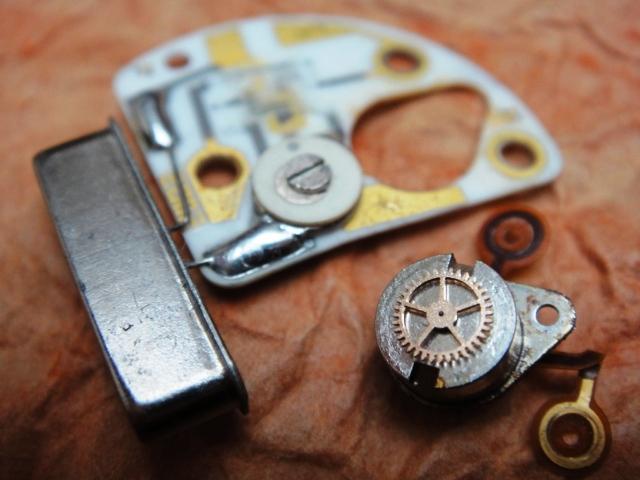Jaeger LeCoultre swiftly abandoned the Beta calibers as those were FAR more expensive to produce, less accurate and proving to be far less reliable.
Some of their 35x engined watch designs are easily recogniseable as both high end and seventies:
The above also has a Faraday cage as anti magnetic design feature:
They produced them too in 18k gold cases and that cost 8500 Sfr. in 1973:
and offered custom cases even (see the ´filled up´ spaces between the lug horns and the strap):
I lóve the high end quality perspective of this 1973 32.786Hz. quartz in a custom 18k gold case*.
As Favre Leuba and Jaeger LeCoultre were both owned by the Saphir group, the GP35x was fitted to a small number of FL watches too, among which in one of thé coolest case designs ever.
Breitling did not have the financial depth to be involved in ány development but they did need a quartz caliber in their model range so they bought the GP35x. They were simply a customer buying in a caliber. Just ike some manufactures bought and fitted the Beta22.
One VERY notable detail of the GP3x calibers is that the JLC gearbox has non lubricated teflon bearings; it is a no-jewel caliber. Today, 40 years later, these telfon bearing are proving to be totally up to the job: Durable, maintenance free, non shattering, non chipping. One can only wonder why main stream manufacture JLC has ignored this. Personally I blaim the marketing value of the ´jewels´- Whereas ´NO jewels!!!!´ should have been a great unique selling point, the market was so used to jewels being best that we are STILL stuck with them....
* to illustrate how thing have changed because of the reïnvention of the mechanical as a luxury, have a look at this 1972 advert in a magazine:
In the seventies quartz was highly appereciated high tech that was very desireable in high end watches. These watches were produed at the highest standards by the most reputable brands. By JLC even in 18k gold custom cases!
All in all the GP35x is a real mile stone in horology with several véry high quality design features.






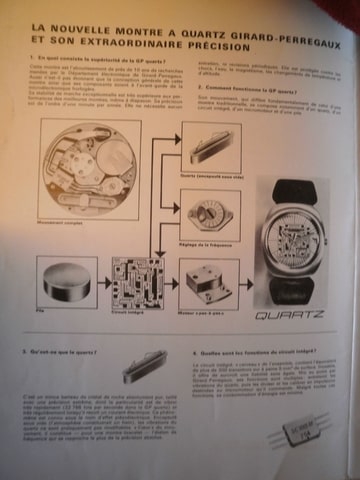
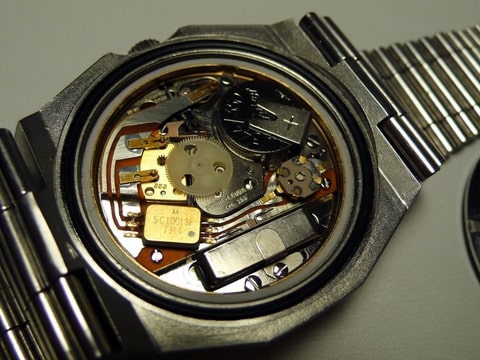
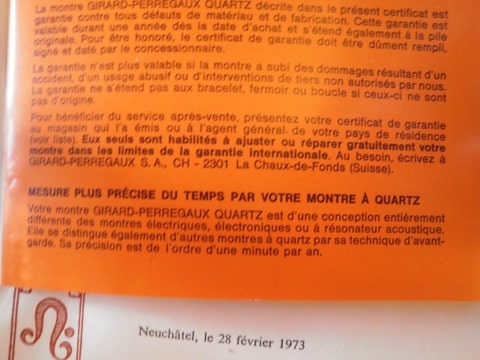
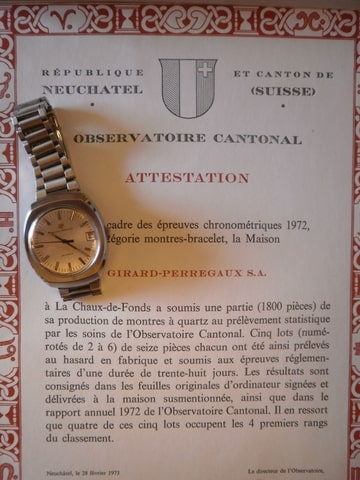
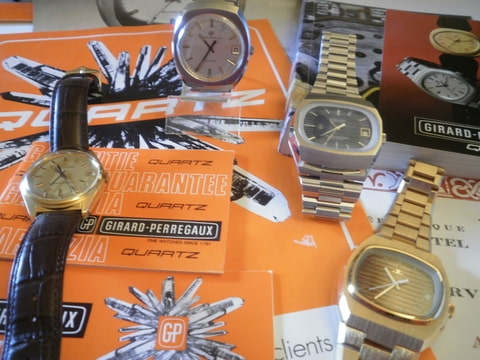

 Reply With Quote
Reply With Quote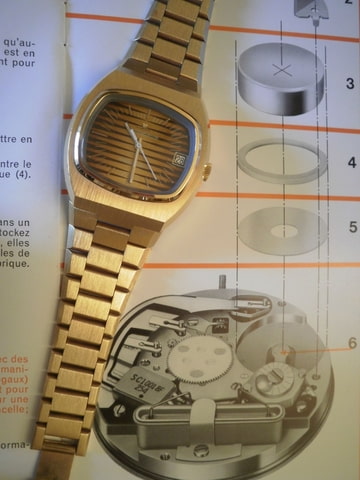
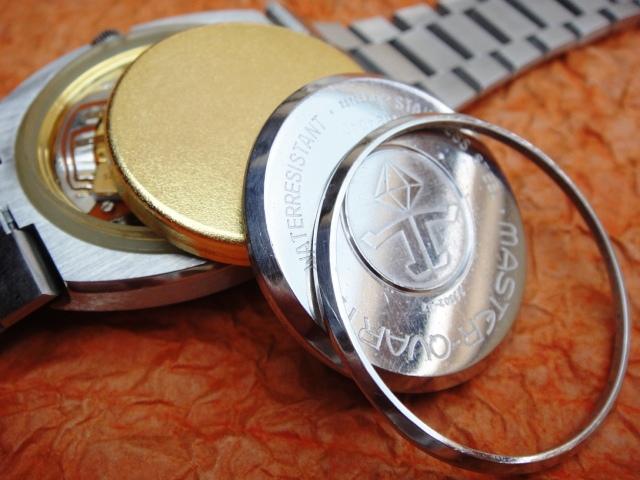
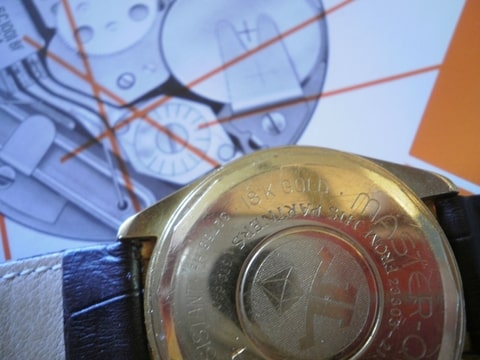
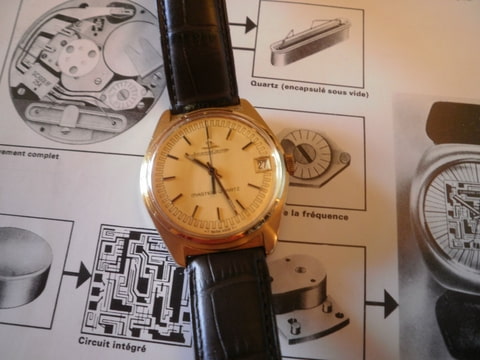
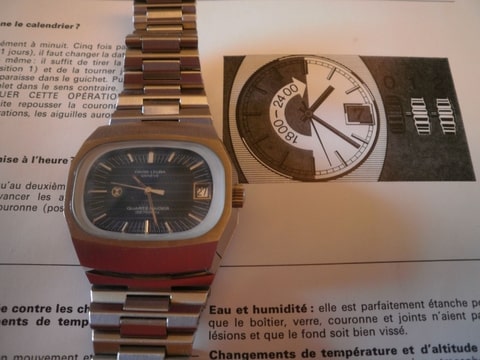
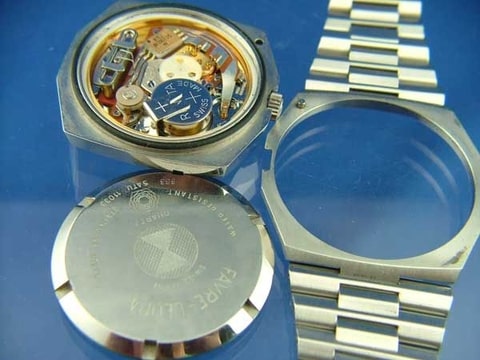
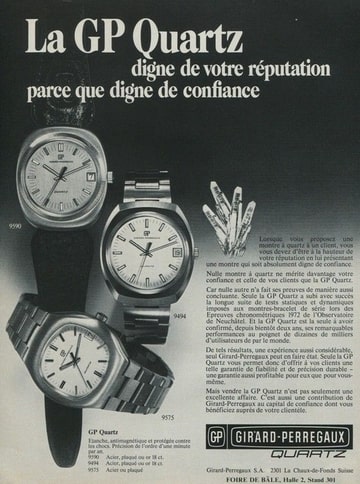



 Petrus. Good post, enjoyed reading this, thanks
Petrus. Good post, enjoyed reading this, thanks


